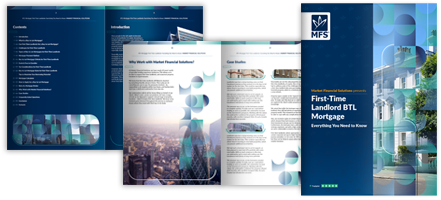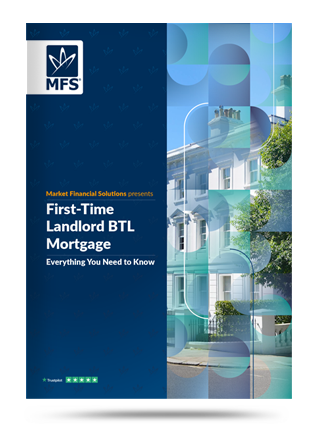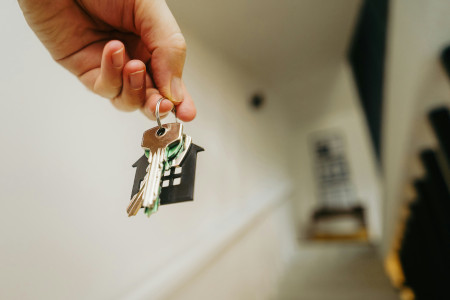Market Financial Solutions are a bridging loan and buy-to-let mortgage provider and are not legal, financial, investment or tax advisers. This document is for informational purposes only and does not, and should not be considered, to constitute legal, financial, investment or tax advice or be relied upon by any person to make a legal, financial, investment or tax decision. Therefore, Investors are encouraged to seek appropriate professional advice. The information in this content is correct at time of writing.

The recent state of the economy has, understandably, got many landlords worried. Costs rose, limiting buy-to-let returns. But, better days may be on the horizon. We’ve seen promising economic signs suggesting inflation is finally under control.
Inflation is currently sitting at 2.2%, while GDP grew by 0.6% between April and June 2024 as the economy continued its recovery from the recession at the end of 2023.
There’s no shortage of economic pessimism in the media, especially where the buy-to-let industry is concerned. But this negativity needs a wider perspective.
Much has been written about landlords abandoning their investments in the face of a brutal market. But Sales of buy-to-let properties and second homes in Britain have jumped by 34% in the past six years. Meanwhile rental yields are recovering.
To help you wrap your head around what a “good” income could look like, this blog will break down how work out yield of a rental property. We’ll also highlight where you may get the best return for your money, and what you could do to boost your profits.
Source: ONS, BBC, Financial Times
What is rental yield and what’s the difference between gross and net?
Rental yield is the potential return on property investment through rent. It’s usually presented as a percentage figure – the result of a calculation using both the annual income generated from the rent, and the value of the underlying property.
Another way to describe it is your annual rental income, as a percentage of the total value of the property. A rental yield is usually one of, if not the most important consideration for any buy-to-let investor. The calculation helps determine if an investment will not only cover your ongoing costs, but also provide a healthy, realistic return.
Generally though, rental yield calculations fall into two categories: gross and net. If you’re wondering how to best work out yield of a rental property, you’ll want to focus on costs. This is important to note.
Some of the example calculations you’ll find online will be gross yields, meaning none of the costs associated with owning a property will be taken into account. A net yield calculation, sometimes known as “true yield”, will break down what you’ll get after costs.
A rental yield will be affected by varying costs and economic factors. Demand in the housing market, property prices, interest rates, and inflation can all affect your yield. But, by working out the yield of a rental property (gross or net) you’ll have a centralised figure to work with. Knowing what you may receive down the line could help you determine whether the property investment will be worth your time and effort.
Source: Axa, Simply Business
How to work out yield of a rental property
A simple gross rental yield calculation involves dividing a property’s yearly rent by its price. Say you want to buy a buy-to-let property for £300,000, which will be rented out for £500 a week. You would divide £26,000 (£500 x 52 weeks) by £300,000, and times the result by 100. In this example, the gross yield is 8.6% (26,000 / 300,000 x 100 = 8.6%).
To work out a net rental yield, you’ll need to incorporate the annual costs of owning the property. Typically, this could include a mortgage, insurances, upkeep and so on. You will need to take the annual rental income and subtract the annual costs. This will leave you with a net rental income. If we use the example above, this could be £26,000 – £6,000 (annual costs) = £20,000 net rental income.
Then, you would take the net rental income, divide it by the property purchase price, and times the result by 100 to get the net rental yield. In this case, the net rental yield would be 6.6% (20,000 / 300,000 x 100 = 6.6%). Remember though, how to work out yield of a rental property may be less of an important question than is the investment worth it in the first place.

The Complete Guide to First-Time Landlord Buy-to-Let Mortgages
Everything you need to know
What is a good rental yield and how does London compare with the rest of the UK?
We all want our yields and returns to be as high as possible. Ultimately though, what’s considered a “good” yield for a rental property will be affected by various financial factors. Your definition of “good” may be different from others. What needs to be remembered, is that “good” should be measured up against what’s “realistic”.
Rental yields will vary widely across the UK, with changing demographics, income patterns, and wealth splits all having an impact. Generally, anything between 6% and 8% is considered a reasonable level of rental yield, according to NatWest. Of course, you may see lower or higher numbers than this, depending on where you’re investing.
Average yields for a rental property in the UK hit 6.1% in Q1 2024 according to Paragon Bank, the highest seen since Q2 2018. Higher yields of 7% can be achieved by landlords in the North East and also those who invest in HMOs.
What’s more, if you compare these yields to other income generating investments, the resilience of the property market becomes apparent. The overall dividend yield on the FTSE 100 stands at around 3.6%. Meanwhile, the current yield on the United Kingdom 10Y Bond is hovering around the 4% mark. Ask yourself not only how work out yield of a rental property, but also, how do the various yields available compare?
Source: NatWest, Paragon Bank, Trading Economics, London Stock Exchange
Are there ways to improve your earnings?
Fortunately, there are many options available to you for boosting your rental yield. Don’t assume you have to settle for any low percentage put in front of you. By investing in your property’s credentials, and reviewing your strategies, you could see higher returns.
To start with, you could make your property more desirable. If you offer tenants a nicer place to stay, they may be willing to pay more in rent. You could do this through several methods. Perhaps you could refurbish the home, making it more tempting to live in. You could also extend certain areas or install new features. Adding in a garage, or sprucing up a garden, may draw in higher paying tenants.
You could also have a rethink on the market you’re targeting with your investment. There’s a chance more lucrative options could be out there. If you’re renting to students, are you sure your space wouldn’t also be suitable for high-end professionals? Maybe all that’s needed to target them is a few cosmetic changes.
Of course, you could also boost yields by lowering your costs. Perhaps you could explore refinancing options to see if there are better rates out there, or more favourable terms. If maintenance or repairs are needed, jumping on them sooner rather than later could prevent more costly bills down the line.
And what about your taxes? Are you utilising all the perks and discounts available to you? It may be worth seeking out advice from an accountant to see if you can cut your tax bill. Regardless of what options you explore though, specialist finance will be there to support you.
How can specialist finance help?
Our permitted & light development loans can help you upgrade your property, allowing you to attract higher rents. Meanwhile, our refinance loans may provide you with the breathing space you need to take your property investment plans to the next level.
Or, if you’re looking to become a landlord for the first time, our residential bridging loans or buy-to-let mortgages can help you get your portfolio started. We have a range of products available, which can all be tailored to suit your requirements. We’re open to hearing your plans for generating long-term income.

The Complete Guide to
First-Time Landlord BTL Mortgages
Everything you need to know
- Comprehensive 22-page guide
- Mortgage types & repayment options
- Costs, fees, rates & tax considerations
- Maximise borrowing & circumvent challenges
- Real-life examples





